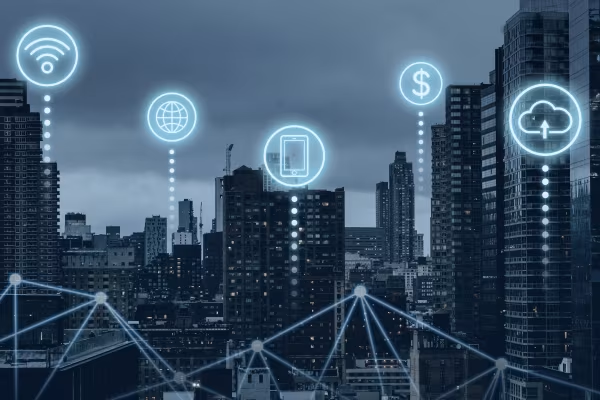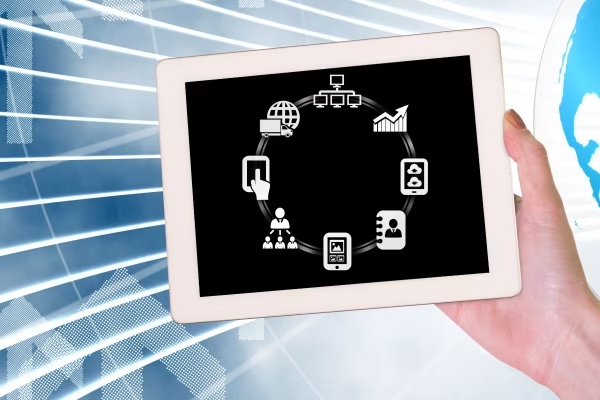
IoT and AI in Consumer Electronics
The consumer electronics industry is experiencing rapid growth, and in recent years, IoT and AI have become key factors shaping how devices function and how users interact with them. The integration of these technologies enables advanced functionalities, and the changes they bring deeply impact everyday life, enhancing efficiency, comfort, and personalization of the user experience.
Internet of Things (IoT) in Consumer Electronics
The Internet of Things (IoT) refers to a network of physical devices, vehicles, home appliances, and other objects connected via the internet, enabling them to collect, exchange, and analyze data. IoT has become an integral part of modern home devices, ranging from smart thermostats and security cameras to smart refrigerators and lights. These devices integrate into "smart systems," allowing users to remotely control and optimize their functions, making everyday tasks more efficient and convenient.
In the context of consumer electronics, IoT enables better device connectivity and introduces advanced features that significantly improve daily life. For example, smart devices can automatically adjust lighting conditions based on natural light, reducing the need for artificial lighting and saving energy. Additionally, sensors in smart devices can monitor the consumption of resources such as water or energy and notify users about potential savings and the need to adjust habits. Similarly, a smart health tracking system can analyze a user’s biometric data and send recommendations for improving physical well-being or automatically connect the user with healthcare professionals if necessary. IoT also enhances the user experience. Devices are becoming "smarter" by collecting data about user behavior and gradually adapting to their needs. Smartphones and other devices can recognize usage patterns, analyze them, and offer personalized recommendations and improvements based on this information.
Artificial Intelligence (AI) in Consumer Electronics
Artificial Intelligence (AI) is a technology that enables devices to "think" and "learn" from data. AI is used in various aspects of consumer electronics, from digital assistants like Amazon Alexa, Google Assistant, and Apple Siri to advanced features in smartphones, televisions, and computers. Through data analysis and the use of machine learning algorithms, AI allows devices to recognize patterns in user behavior, predict their needs, and enhance the experience.
One of the most prominent examples of AI application in consumer electronics is smart assistants. These devices use voice commands to perform various tasks, from setting reminders to controlling smart home devices. Through advanced algorithms, smart assistants become increasingly accurate in recognizing specific user requests and develop the ability for contextual understanding, allowing them to provide accurate and relevant responses.
Artificial intelligence also plays a crucial role in the advancement of visual recognition technologies, which have become a core functionality in many modern devices. In smartphones, AI enables facial recognition and automatically adjusts camera settings for better photos depending on lighting conditions. Furthermore, in smart TVs, AI is used to enhance image and sound quality, adjusting them to the specific conditions of the room and user preferences, thereby improving the overall viewing experience.
AI is increasingly used in advanced data analysis systems, enabling devices to learn from user behavior and improve their performance. For example, in smart cars, AI tracks the user’s driving style and adjusts various vehicle functions, including engine operation, energy efficiency, and safety systems, all with the aim of optimizing driving and increasing comfort.
The Synergy of IoT and AI in Consumer Electronics
IoT and AI complement each other, creating advanced functionalities that were previously unavailable. IoT enables device connectivity and real-time data collection, while AI takes on the task of analyzing this data and making decisions based on recognized patterns. Together, these technologies allow devices to automatically adjust to users' specific needs, improving everyday interaction and device functionality.
One of the best examples of how IoT and AI can effectively collaborate is the concept of smart homes. In this environment, IoT devices collect data about user habits, while AI analyzes this information to optimize daily activities. For example, a smart energy management system can track when the home is most frequently used and, based on this data, automatically optimize energy consumption – turning off lights and devices when no one is home. Additionally, AI can predict the user’s needs and proactively manage devices, such as turning on the air conditioner before the user arrives home, taking into account previous habits and preferences. This level of automation and personalization makes everyday life more efficient and enjoyable.
The Future of Consumer Electronics: IoT and AI Integration
IoT and AI are technologies that together shape the future of consumer electronics, allowing devices to become smarter, more efficient, and adaptable to user needs. The synergy between device connectivity and their ability to learn and make decisions based on collected data creates a new dimension of the user experience, enhancing comfort, efficiency, and personalization. Smart homes, personalized assistants, energy-efficient devices, and even cars that recognize driving styles are just some examples of how IoT and AI together enable advanced functionalities that improve everyday life.





